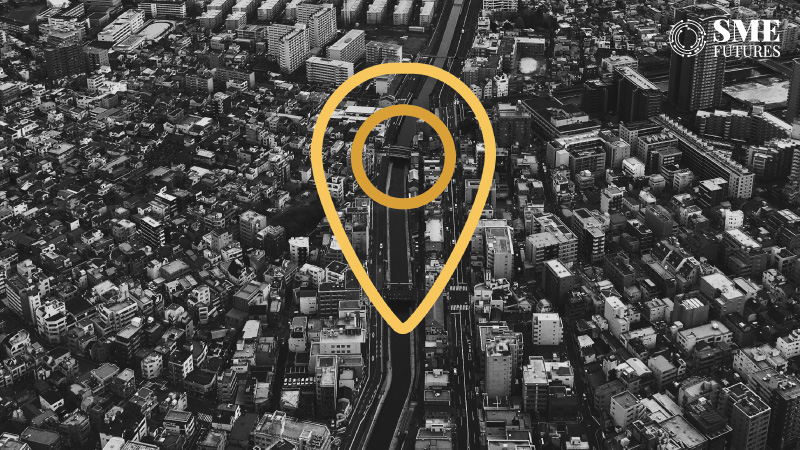Are you tired of having your orders reach the wrong location or having to navigate your delivery partner through endless blocks to receive your order?
Each one of us has faced similar problems during the delivery of our orders at some point or the other.
This issue of location during order delivery gave birth to the idea: Pataa. The brainchild of Rajat Jain and Mohit Jain, Pataa is an application based in Indore. Launched in 2019, Pataa solves the issue of the lack of accuracy that commonly plagues addresses in India. The app provides pin-point accurate locations using its block-based system of location detection. The rate of deliveries in the future is only going to get higher and the problems with accurate location detection need to be promptly solved to facilitate the process of deliveries and the other operations that are related to them. Pataa is doing just that.
Also Read: How QSRs can cater to changing consumer habits and behaviour
SME Futures spoke to Rajat Jain, Co-founder, Pataa Navigations on how Pataa facilitates finding addresses and how it is leading an address revolution.
Using geospatial data to simplify addresses
Gathering the required data is just the beginning of the process. To counter the address problem in India, precision and accuracy are the two factors that need to be focused on. Pataa identifies the multiple problems that these addresses face and counters them with the latest technologies and creative solutions.
“Pataa is a digital addressing app which aims to solve the poor addressing system in the country. Pataa is the next big thing in the world of addressing with its revolutionising technology and state-of-the-art features,” Rajat says.
“Pataa has divided the entire world into 3-by-3 metre square blocks, which we have termed ‘Square codes’; by doing this, we have created 57 trillion completely distinct square codes. Under these codes are unique Pataa short codes that are given to the buildings in that block for identifying the different buildings that are in very close proximity to each other,” Rajat explains.
“The Pataa short code is not just a location system; it creates multi-dimensional addresses by adding not just a user’s address but also voice directions, property photos and some more vital information, thereby enhancing location accuracy with the utmost precision, making navigation a breeze,” he further points out.

How is Pataa leading an address revolution
Their unique short code feature is not the only USP of Pataa. They are employing various initiatives and technologies to change the current address scenario in India. One of them is the voice direction feature that could further facilitate the process of identifying addresses by making it easier for delivery representatives or for anyone else to navigate to the right locations.
“By giving voice directions, users can record directions in their own voice from their nearest landmark which gives them the freedom to explain their address the way they usually do,” he says.
“Besides this, the app has features like landmark pinning. Since over 80% addresses in India are landmark-based, Pataa allows users to mark the nearest landmark from their property and the app then suggests the best routes to the address,” Rajat points out.
And that’s not all. To keep things clearer and even more accurate, one can attach property photos with one’s address to make it easier to locate the exact building, house or any property for that matter.
Also Read: Logistics services platform Delhivery now live on government’s ONDC
“With Pataa, users can share their addresses with a single tap via SMS or through other platforms as well. Visitors who don’t have the app can still access the user’s Pataa through a hyperlink,” Rajat underlines.
Further, additional information like ‘Beware of dogs’, ‘Keep the item with the security personnel’, etc. can also be inserted within the unique property code to highlight other useful details for a smooth navigation and delivery experience for everybody.
MoU with ISRO
The unplanned structure of the streets in some cities makes it extremely hard for locations to be given a precise address. Hence, on many occasions, wrong addresses are detected by navigation apps, which causes problems for delivery representatives — both in terms of time and effort.
“We are facing a severe address problem in the country where a vast majority of the people are living in unnamed areas without proper addresses. Pataa is helping sort out these problems and solve them one by one, but this isn’t enough and that’s where the MoU with ISRO comes in,” Rajat says.
“This MoU will help Pataa disrupt the navigation solutions industry by enabling people to have satellite image-based digital addresses. The collaboration with ISRO will enable us to use the services of ISRO portals like Bhuvan, VEDAS, and MOSDAC. This alliance will also expand the geo boundary, which in turn will benefit rural India by making operational the essentials and fulfilling the requirements that are imperative for the rural population,” he avers.
The way ahead
“With intensive research and development and strategic marketing campaigns, we were able to get our application out to the masses. But just getting the application out to users isn’t enough, it is how the users react and respond to the product, which is important. We have seen an exponential growth amongst our users and with analysis, we have understood that our application was truly appreciated by people, and they also shared it with their known associates. With the mass acceptance of the application, we were able to stand out in the market which, in turn, attracted huge potential investors,” Rajat says.
Also Read: Tech layoffs surpass Great Recession levels, set to get worse in early 2023
The future of delivery will consist of drone delivery systems. Inter-state deliveries will also be paced up to match consumer demands, which would require a quicker flow of information. Looking at the current scenario, things seem to be moving in the direction of growth and the prospects seem positive and promising.
“Along with solving the country’s addressing problem, Pataa’s future vision is to provide assistance during drone-based deliveries, which will help logistics companies to improve the delivery experience. Along with deliveries, Pataa also plans to integrate its technology comprising of its unique block system and its accurate navigation feature within autonomous vehicles. Pataa is also working on AR-based technology which will further improve the navigation experience for our customers,” he says while signing off.











